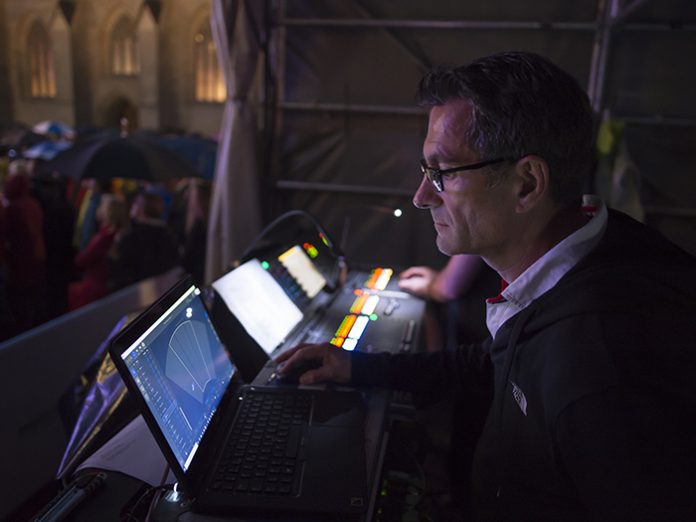
Swiss event technology company Hyposound AG chose L-Acoustics L‑ISA’s Hyperreal Sound technology for the 2018 edition of Festspiele Zürich, a 150th-anniversary concert of the city’s famous Tonhalle Orchestra.
Hyposound owner Christoph Müller has worked with the Tonhalle Orchestra on a regular basis and has been dealing with natural sound reproduction for several years. “Using L‑ISA gave us the chance to take things to a different level,” he said. The concert took place on a specially built stage in the Münsterhof (town square). “We knew it would be well suited to L‑ISA, but the results were incredible.”
Müller designed the system using the French manufacturer’s Soundvision 3D simulation software. Soundvision enabled him to determine the various heights needed for the loudspeaker hangs and give the stage builder exact information for both heights and loads.
“Because L‑ISA is a relatively new system and we were using it for the first time, we worked closely with L‑Acoustics on the design, particularly with Touring Applications Engineer Thomas Mehlhorn,” explained Müller. “It was really valuable to have people with us who have in-depth knowledge of L‑ISA and can work with the stored design parameters.” Additionally, Frédéric Bailly, L-Acoustics Application Engineer, was on site to provide support for the L-ISA Controller.
At 16m, the stage was very wide. With guests of honour seated as close as three metres from the stage, it was important that the L-Acoustics L-ISA configuration provide optimal coverage for the front, centrally positioned seats, but equally important for the rest of the space, which was open to the public.
The final L‑Acoustics L-ISA design comprised 5 hangs of 9 L‑Acoustics Kara each, distributed across the stage width and flown heights of 8.5m with 5m between each hang. 4 L‑Acoustics X8 were deployed along stage lip as frontfill and with an L‑Acoustics ARCS Focus each side as outfill. A central sub system was flown behind the L‑Acoustics Kara centre hang, comprising 6 L-Acoustics SB18 in an end-fire configuration. The entire system was powered by 10 L-Acoustics LA8 Amplified Controllers.
“As the concert was open-air, it was important to give the invited audience a spatial impression,” said Müller. “However, as the concert was also open to the public, we knew the whole square would be crowded and we wanted an even sound for the entire audience, not just for those standing or sitting in the middle. L‑ISA’s multichannel technology gave us the tools to be able to provide the perfect solution, delivering a crystal-clear sound with a great foundation in the low frequencies.”
Lighting Designer Markus Güdel, worked in collaboration with Hyposound to ensure that both the L-Acoustics L-ISA system and lighting design achieved the desired production outcome.
“Thanks to the truss in the venue, there were sufficient hanging points for flexible positioning of the light sources,” explained Güdel. “And what we heard from L-ISA was unbelievable! On this basis, lighting designers will be happy to plan stage lighting concepts that are compatible with the L-ISA technology.”
Rehearsal time for the show took place in brilliant sunshine, but heavy rain arrived for the performance. By using the Air Compensation EQ tool in LA Network Manager, however, Müller easily adapted the system for the change in conditions, allowing sound engineer Ueli Würth to fully focus on the balance and dynamics of the mix.
“The sound of the orchestra was fantastic despite the rain,” recalled Regula Weber, Tonhalle-Gesellschaft Zürich, Project Leader for the concert. “You could hear the individual instruments and where they were positioned on stage from everywhere, which was what impressed me most. The entire production had a lot of energy and we had a lot of positive and enthusiastic feedback from the audience.”
“I was fascinated by how spatial the sound feels, even though we played outdoors,” added Andreas Berger, Solo Percussion for the orchestra. “It’s fantastic how detailed it is; you can distinguish the individual instruments from the deepest bass to the piccolo flute in the overall sound. The sound always appears complete, big, lifelike, and consistent.”




